Making a diamond purchase is an emotional and financial investment. You need to know the secrets of diamonds.
Table of Contents
The article was most recently updated on 17/03/2025. The average reading time is 17 minutes.
What do you have to do at the start? Read below to find Secrets About Diamonds.
Let us start with the secrets of diamonds. Do not buy precious stones on the road or from untrusted people. Even experts have the knowledge and equipment. They need some time to identify the diamond and qualify it.
What is the April Birthstone?
The April birthstone is the diamond, a symbol of everlasting love and strength, often associated with clarity and brilliance.
Diamonds’ enduring popularity can be traced through centuries, with historical significance tied to royalty and luxury.
Diamonds are believed to possess powerful healing abilities and can enhance inner strength.
Culturally, diamonds symbolize purity and perfection, making them a popular choice for engagement rings to signify a lifelong commitment.
History and Meaning of the Diamond Birthstone
The meaning and history of the birthstone diamond go back to ancient India when diamonds were highly valued as sacred stones representing power and purity.
In ancient India, diamonds were believed to possess mystical powers and were often worn by warriors for protection in battle due to their association with strength.
In various cultures across the globe, diamonds are viewed as symbols of purity and perfection, representing everlasting love and commitment.
Throughout history, diamonds have been prized for their beauty, durability, and rarity, earning them a reputation as the ultimate symbol of luxury and prestige.
Ancient Beliefs and Customs
Ancient beliefs and customs surrounding diamonds reflect their rarity and beauty. Civilizations in South Africa and India attributed mystical powers and protective qualities to these precious gemstones.
From ancient times to modern times, diamonds have been treasured not just for their physical properties but also for their spiritual significance. In various cultures, these gemstones are believed to bring good luck, foster harmony, and even ward off evil spirits.
Throughout history, diamonds have been used in rituals and ceremonies, symbolizing strength, purity, and eternal love. The practice of embedding diamonds in royal regalia and religious artifacts exemplifies the enduring cultural value associated with these enduring gems.
Modern Significance
In modern times, diamonds have become synonymous with love and commitment, especially through De Beers’ marketing efforts and the tradition of using diamonds in engagement rings as symbols of eternal love and marriage.
This symbolic connection dates back to the late 1940s, when De Beers launched its iconic slogan, ‘A Diamond is Forever,’ reinforcing the idea of everlasting love encapsulated in a diamond. Since then, diamonds’ brilliance and durability have been associated with the enduring nature of relationships, making them the perfect choice for symbols of eternal commitment.
This marketing strategy has significantly shaped engagement ring culture, with diamonds positioned as an essential component of the proposal process. Couples often equate the diamond’s size and quality with the depth of their love and the strength of their relationship, fueling the demand for larger and more elaborate diamond rings.
Find if a diamond is natural or not.
There are some easy ways to check whether a diamond is natural or not without any special equipment.
Check if a diamond is natural with a glass of water.
Check if a diamond is natural with a glass of water.
Take a glass of water and drop the diamond inside.
If it is a natural diamond, it will sink. If it is fake, it will stay at the top or middle of the glass.
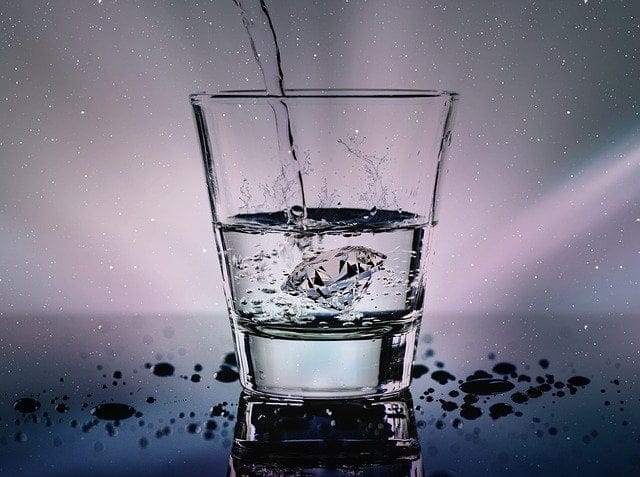
Check if a diamond is natural with your breath.
Place the diamond near your mouth and fog it with your breath. A natural diamond will not get fogged quickly. When it is fogged for a couple of seconds, it is probably fake.
Check if a diamond is natural with a magnifying glass.
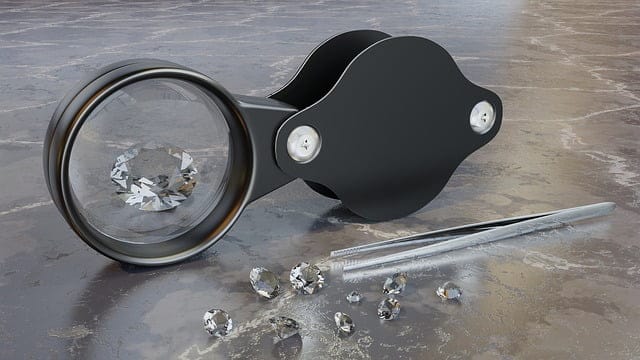
If you have a magnifying glass or can ask someone to give it to you, you can check the stone with it. Look in the mirror for imperfections. Natural diamonds have flaws; fake ones or lab-created ones don’t. Sometimes, a genuine diamond has no inclusions, but it will be too expensive.
Or you can examine the diamond with a loupe, like the ones that jewelers have. Inspect the stone for imperfections or color changes. Usually, they have, which means the diamond is natural. There is always the possibility that you are seeing a flawless diamond. In that case, check for a certificate or ask a professional.
The 4 Secrets About Diamonds…and more
Diamond Cut
Nature determines the color of the diamond, but man is responsible for showing true beauty with the cut procedure.
Only professionals can bring the diamond from its natural appearance to a piece of art.
The most crucial factor is the diamond cut, which means how much the stone shines or sparkles.
The surface of the diamond and how well it is distributed are the cut factors.
Diamond Cutting techniques.
There are many shapes and cutting techniques; the most popular is the Round Brilliant, mainly because it reflects the light the best. Find ten facts about diamonds and diamond cutting at en.wikipedia.org/wiki/Diamond_cutting
According to the GIA (Gemological Institute of America), the scale is Excellent, Very Good, Good, Fair, and Poor.
These are the characteristics of a diamond cut.
- The brilliance. How much reflects the white light?
- The fire. It is the dispersion of light in the different colors of the rainbow.
- The contrast patterns. Contrasting light and dark areas created by the reflection.
- The scintillation. The contrast between dark and light areas.
Diamond Anatomy
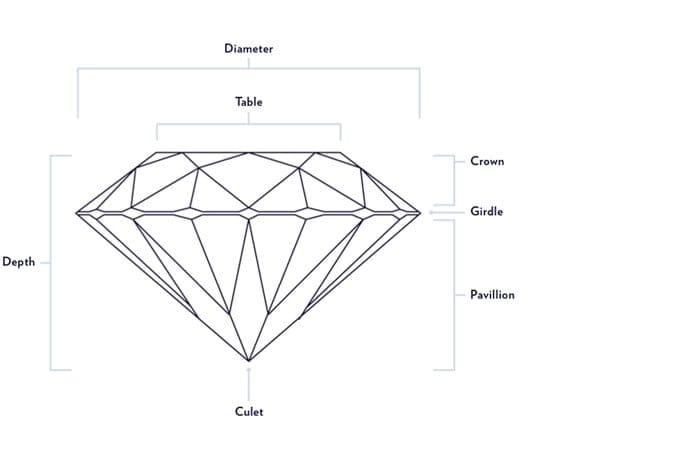
When you buy a piece of diamond jewelry.
When buying diamonds, most people ask for the carat value. The most crucial factor determining the price is the diamond cut.
An excellent diamond cut is the most expensive. This is because it optimizes light more and has superior sparkle.
Diamond Color
Diamonds come in all natural colors, like light yellow, grey, white, green, and brown. The diamond color means the absence of color. It is rare to find a diamond without any color.
The color scale grade
The color scale D to Z is the industry standard for rating diamonds. D means colorless, while Z means light. To put it simply, a D-grade color diamond is the most valuable. So, the price decreased alphabetically, going up to Z.
Secrets about Diamonds and Color
- Only a certified gemologist can color-grade a diamond.
- Color is more visible in bigger diamonds.
- At the GIA laboratory, diamonds are colored grade, compared with masterstones (diamonds known color).
- When diamonds are exposed to Ultraviolet (UV) light, they emit fluorescence.
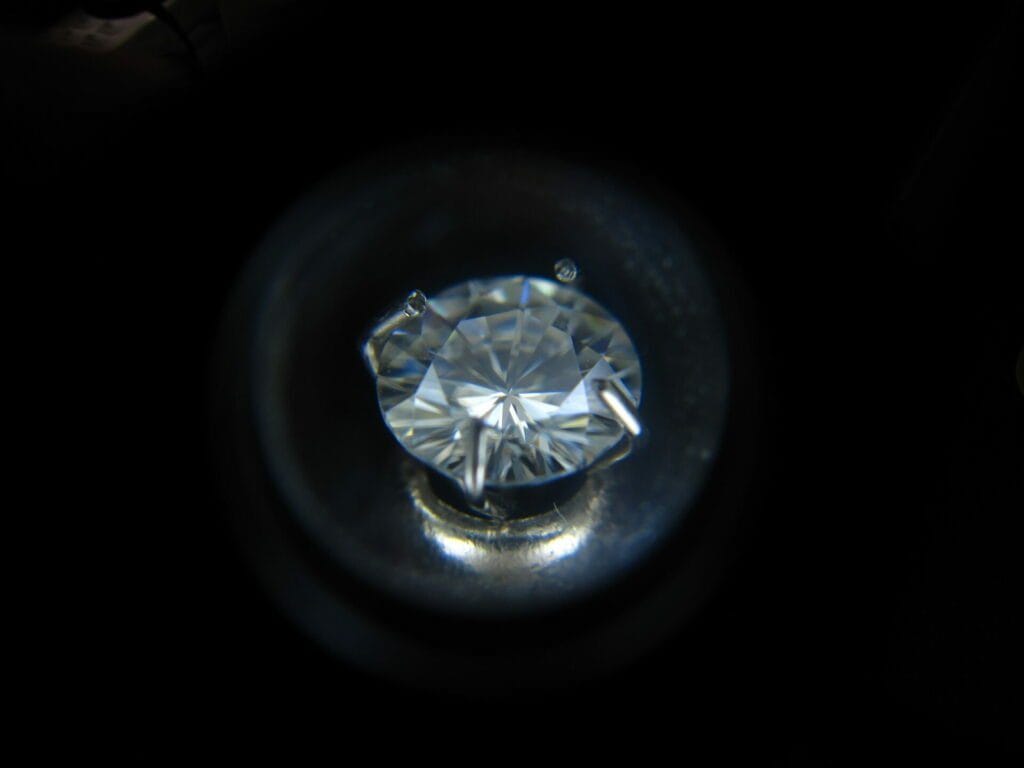
A test for our viewers reading secrets about diamonds. Open the above image in a separate tab and find any color inside the diamond.
Leave a comment below. Let us see who is the first with the correct answer.
Diamond Clarity
Diamonds are made inside the Earth under extreme circumstances. Pressure and heat create minor imperfections.
These imperfections are the reason for the diamond clarity grade.
If the flaws are inside the diamond, they are called inclusions. If they are on the surface, they are blemishes.
Inclusions are also called internal characteristics because they give the diamond its character.
Secrets about diamonds and clarity.
- Diamond clarity is one of the four essential characteristics of a diamond. Clarity will affect the price, but it also affects the beauty of the diamond.
- Big-sized diamonds have a greater impact on clarity. Also, fancy-shaped diamonds need a higher clarity grade.
- When the inclusions are too small to see with the naked eye, we call the diamond “eye clean.”
Diamonds clarity category grades
- Included Diamonds. (I1 to I3). The lower category means the inclusions are visible to the naked eye.
- Slightly Included Diamonds. (SI1 and SI2). Inclusions are noticeable with magnification.
- Very Slightly Included Diamonds. (VS1 and VS2). Minor inclusions are noticeable with magnification—great value over price.
- Very, Very Slightly Included Diamonds. (VVS1 and VVS2). These diamonds have inclusions that are very difficult to see, even magnifying. These are rare diamonds and follow an eye-clean appearance.
- Internally Flawed Diamonds. (IF). Some blemishes (on the surface) are visible on a microscope.
- Flawless Diamonds. (FL). A perfect natural diamond is rare because it has no internal or external characteristics.
Different types of diamond characteristics.
Inclusions can be knots, feathers, clouds, cavities, or crystals
Blemishes can be scratches, breaks, nicks, or pits.
Never buy a diamond under stress. It is better to be late than sorry.
With love from our team.
Diamond Carat.
Diamond carat refers to its weight, not its size.
This is one of the reasons why we created the article “Secrets about Diamonds.”
Every carat (ct.) weighs 0.2 grams of a diamond or 200 milligrams. Each carat is divided into 100 points.
That means if a diamond is 1.13ct, it is called “1 carat and 13 points”.
Secrets about diamonds and carats.
- It is essential to say that diamonds of the same weight do not necessarily have the exact sizes.
- When diamonds are mined, small gems are discovered more frequently, which is why the large rocks are more valuable.
- Diamond prices rise logarithmically with the carat weight. For example, a diamond of 1.5 carats is worth more than two diamonds of 0.75 carats when they are both of the same quality.
- Remember this: The diamond’s value is determined by its four significant values: cut, color, clarity, and carat weight.
- When you buy a piece of diamond jewelry, you may hear the term “tw.” That is the total weight of the diamonds in the jewelry.
- As we already said, carat weight is not the same as size, which is why the shape of a diamond is different.
Please read our article about women’s rings. Learn the Secrets To Be Awesome.
Diamonds are a girl’s best friend.
Marilyn Monroe
Certifications.
Diamond certification is when a gem laboratory tests and assesses the quality of a diamond.
The lab creates a written report or certificate that remains in the archive, and a copy is sent back to the diamond owner.
Every certificate has a number that can be inscribed on the diamond with a laser. This proves that the specific diamond is graded, and even if the certificate is lost or stolen, it is easy to find it again from the records.
Secrets about diamonds and certifications.
- Documents or appraisals from any jeweler are not counted as certifications. Gem labs use special equipment to grade each diamond.
- Some diamond certifications issue a plot of the diamond. This is a map or drawing of the diamond inclusions (internal marks)
- We are talking about natural diamond certifications. Find out more about lab diamonds later in the article.
- You can prove the diamond’s grade when you want to resale a diamond.
- Verify your diamond in case of repair or insurance.
- The US Government legally permits jewelers to sell diamonds to be off by one color and clarity grade. That means you can pay a significant amount more. Never buy an expensive diamond without certification.
Where can I certify a diamond?
Here, we can provide some of the most popular labs worldwide for diamond certification.
- Gemological Institute of America: gia.edu. Established in 1931, GIA is the world’s foremost authority on diamonds, colored stones, and pearls. It is a public-benefit nonprofit institute that is the leading source of knowledge, standards, and education in gems and jewelry. Find more secrets about diamonds on the research page on the gia.edu website.
- American Gem Society: americangemsociety.org. Since 1934, the American Gem Society (AGS) is a nonprofit trade association of fine jewelry professionals dedicated to setting, maintaining, and promoting the highest standards of ethical conduct and professional behavior through education, accreditation, and recertification of its membership, gemological standards, and gemological research. You can find more secrets about diamonds on their website, including birthstones.
- European Gemological Laboratory: egllaboratories.org. Since 1974, EGL has today been the world’s largest independent network of gemological laboratories. Note: The First five symbols on the certificate code are capital letters (EGLOO), not numbers.
- International Gemmological Institute: igi.org. IGI is the largest organization of its kind, operating 20 laboratory locations around the world that grade finished jewelry, natural diamonds, lab-grown diamonds, and gemstones. Its 14 schools of gemology graduate thousands of new jewelry professionals each year. You can find more diamond secrets on its website, including gemstone articles.
- Hoge Raad voor Diamont: hrdantwerp.com. Since 1447, Antwerp has been synonymous with quality diamonds and superior craftsmanship. Already then, the world’s leading diamond center secured a well-regulated market that won the absolute confidence of traders and consumers. Go to their website to find out: What are three interesting facts about diamonds?
Check our article about types of all types of gemstones.
Secrets About Diamonds. Lab-Grown Diamonds.
Natural diamonds have been formed underneath the Earth for over a billion years under tremendous pressure and heat. Lab-grown diamonds are created in a Lab in a few weeks.
There is also a chemical difference. Natural diamonds may contain little nitrogen, but lab-grown diamonds don’t. That is the only difference between the two.
Even the FTC (or Federal Trade Commission) classes artificial diamonds as accurate due to the gem’s chemical makeup.
Scientific facts about diamonds. Lab versus Natural.
Ten scientific facts about diamonds
- Lab-grown diamonds are about 35% cheaper than natural ones. This year, because of the ample supply, the difference is even greater. When comparing same-quality diamonds, we could find 50-65% more affordable prices.
- Natural diamonds are always a good investment. They have great value over time.
- Lab-grown diamond prices have dropped by 70% in the last two years. This is due to new technologies and a greater supply. On the other hand, the natural diamond supply is the same, so prices do not fluctuate.
- Lab-grown diamonds have minimal to no resale value, while natural diamonds have a resale value of about 50%.
- Gcal (Gem Certification & Assurance Lab) is one of the certification labs for lab-grown diamonds. Their report does not include a message for minor tinges like blue, brown, or green.
- Do not buy diamonds from websites or pictures. They can have those lovely 360-degree images, but they will never give you the sparkle of any diamond. You better visit your jeweler and see the diamond yourself.
- Should I buy a lab-grown or a natural diamond? This is the most asked question. It is all about your priorities. If you have a budget of $5.000-$7.000 and want a 2ct diamond with an excellent cut, go for a lab-grown one. But you can always select a smaller-carat natural one with the same quality.
- In the last few years, partners have been going together to buy diamond jewelry. When you have doubts about what your partner wants, ask them. Some people can be ethical enough to choose lab-grown only.
- Others can see the investment over time and want a natural diamond. Asking your partner doesn’t hurt. It will give you the right idea of what he wants, and you both can be happy.
- Our last piece of advice will be always to focus on quality. Whether natural or lab-grown, you will have the best results if you focus on quality. After all, we want that fantastic sparkle when choosing any diamond.
Check to see our article about the most famous diamonds of all time
Conclusion. The ethical part.
If you have seen the movie Blood Diamonds, starring Leonardo DiCaprio, you know that buying natural diamonds is ethically questionable.
- The film’s ending, where a conference is held concerning blood diamonds, refers to a historic meeting in Kimberley, South Africa, in 2000. It led to the Kimberley Process Certification Scheme, which sought to certify the origin of rough diamonds to curb the trade in conflict diamonds; the certification scheme has since been mostly abandoned as ineffective.
- The expression “ethical diamond” has emerged to help upright shoppers recognize precious stones mined without exploiting laborers or the climate.
- Most natural diamonds are not traceable. From mining to selling, there are so many people involved. Most rough diamonds are sorted and mixed before they are cut and polished. That is why it is impossible to know the certificate of origin. Suppose it is a large mining company or from another source. Some Canadian diamonds are branded, so we see the head, but all the others lost their identity through the diamond channel.
- With the rise of the Internet in the last few decades, marketing can give you false signals. Russian mining companies employ thousands of workers while giving back to the community. This can be optimistic, but history has taught us that not everything is accurate. Information in Russia is regulated and controlled, so we do not hear about reports of human rights abuses in the mining industry.
So, what are your options for diamonds?
- Lab-grown or artificial diamonds. Synthetic diamonds are risk-free for the workers and the environment.
- Canadian diamonds. You can trace the origin of the ID number by using the ID number. Canada has stringent environmental and fair labor laws.
- Recycled diamonds. Considering the environment and ethical issues, there is a good alternative. Pre-owned diamonds are often polished and certified again.
- The Kalahari Dream. De Beers is one of the largest mining companies. It created a venture to mine and sell directly to consumers, which is the ideal solution. For more info, please visit kalaharidream.com.
Do you want to find the perfect engagement ring? Read out the full article here.
If you want to find the largest diamond found, check this page from history.com
Frequently Asked Questions
What makes diamonds so unusual?
Diamonds are unusual because they are the hardest known natural substance on Earth. This property is due to the unique crystalline structure of diamonds, which are carbon atoms tightly bonded in a lattice-like arrangement. This structure gives diamonds exceptional hardness and durability, as well as their high melting point and resistance to scratching, chipping, and other forms of damage. Additionally, diamonds are scarce and are found only in a few parts of the world, which adds to their value and desirability. Furthermore, diamonds are known for their brilliance and fire, the play of light and color that occurs when diamonds are cut and polished into a specific shape. This makes diamonds a popular choice for jewelry and other decorative items.
Do diamonds have powers?
Diamonds do not have any magical or supernatural powers. Diamonds are a type of mineral, precisely a crystalline form of carbon, and they do not possess any special abilities or properties beyond their physical characteristics. Some believe diamonds have specific healing or therapeutic properties, such as improving mental clarity or enhancing emotional well-being. Still, these beliefs are not based on scientific evidence. Additionally, some people may associate diamonds with good luck or other positive qualities, but this is a cultural or personal belief rather than a physical property of the diamond itself. In general, diamonds are valued for their beauty, rarity, and durability, and they do not have any inherent powers or abilities.
What are ten interesting facts about diamonds?
Diamonds are the hardest known natural substance on Earth.
Diamonds comprise pure carbon, the same element that forms the basis of all living things.
Diamonds are found only in a few places, including Africa, Australia, Canada, and Russia.
The word “diamond” comes from the Greek word “Adamas,” which means “invincible” or “unconquerable.”
Diamonds were first discovered in India over 3,000 years ago.
Due to their extreme hardness, diamonds are often used in industrial applications, such as cutting, drilling, and grinding.
Diamonds are the birthstone for April.
Diamonds are often used in engagement rings to symbolize eternal love and commitment.
The largest diamond ever discovered is the Cullinan Diamond, which weighed over 3,000 carats and was found in South Africa in 1905.
Diamonds are highly reflective and are known for their “fire” or “brilliance,” which is the play of light and color that occurs when cut and polished into a specific shape.What is the meaning behind the diamond as the April birthstone?
The diamond symbolizes strength, purity, and everlasting love, making it a fitting birthstone for those born in April.
Are there any famous diamonds associated with April?
One of the world’s most famous diamonds, the Hope Diamond, is believed to have been discovered in India in the 1600s and is associated with April.
What is the traditional anniversary gift for the 60th wedding anniversary?
Diamonds are the traditional gift for the 60th wedding anniversary, symbolizing the strength and enduring love of a long and successful marriage.
Do you want to add more information to this article?
Are you going to choose a diamond ring for your next purchase?
Leave a comment below about our article Secrets about Diamonds.

Pashalis Laoutaris
I am a professional writer, fashion blogger, and owner of the site https://laoutaris.com. I have more than 20 years of experience as a salesperson in the fashion industry and 10 years of experience as a fashionista. I consider myself a true fashionista. I write daily blog articles about fashion, tools and converters, and everything you need to know about current fashion trends.
Laoutaris Recommends

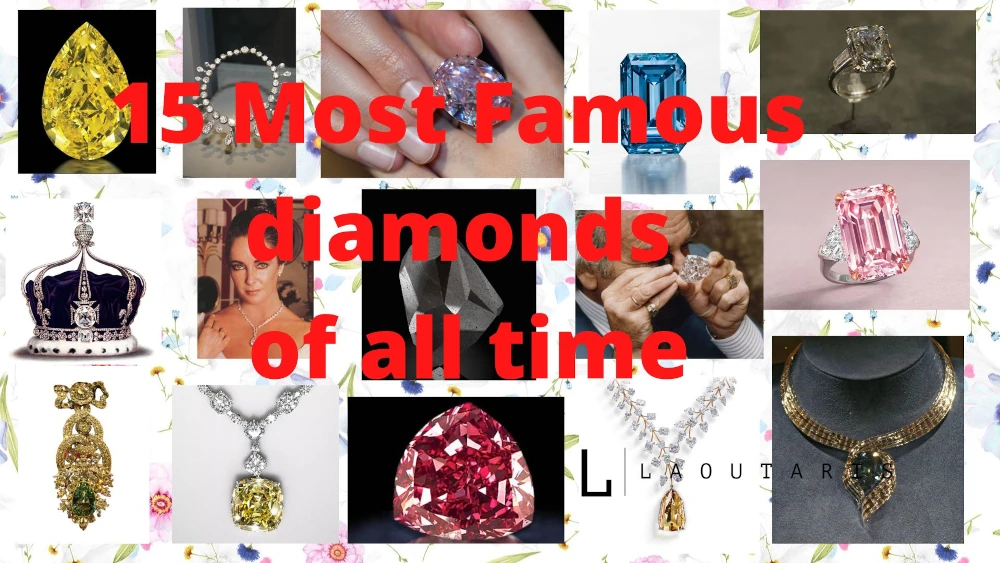
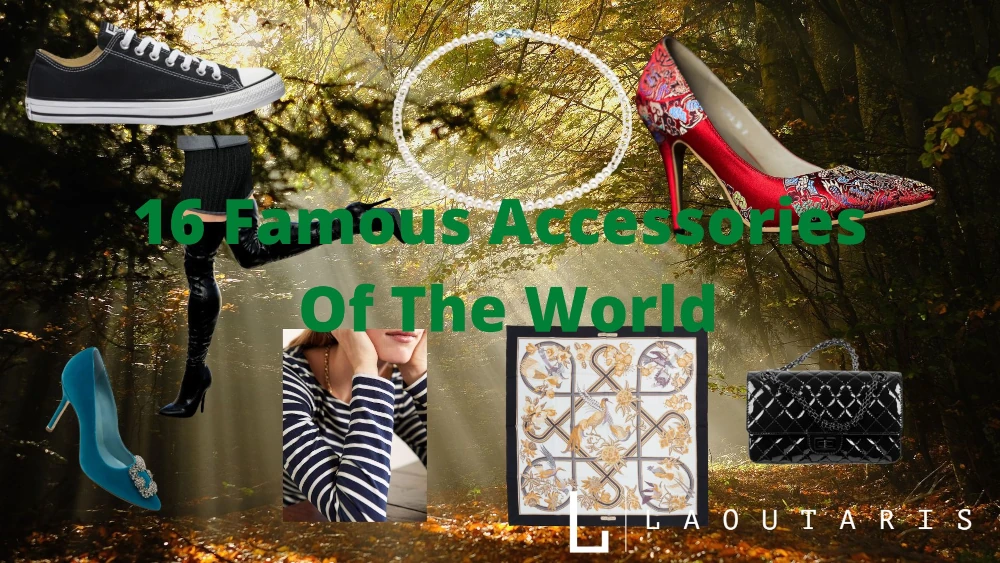
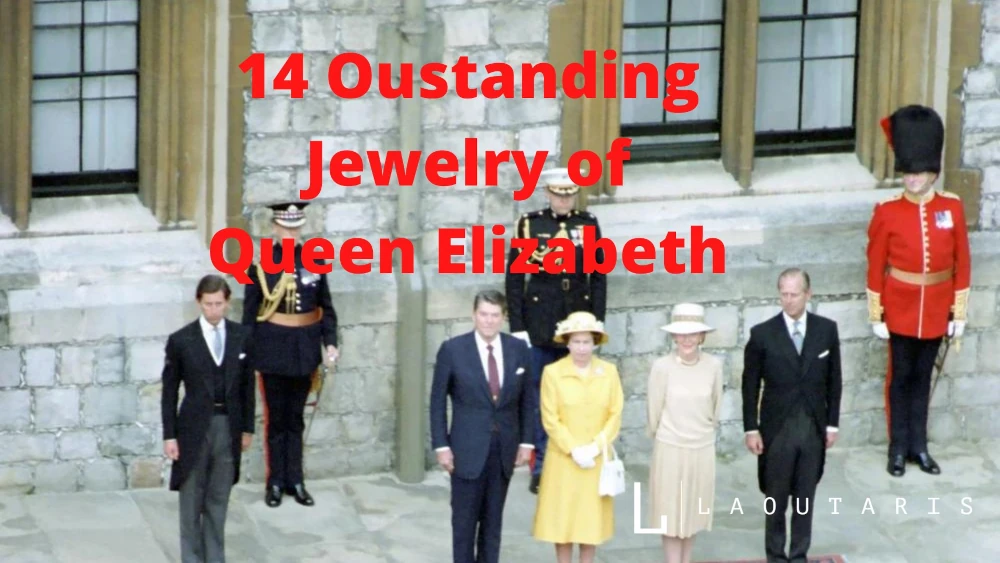



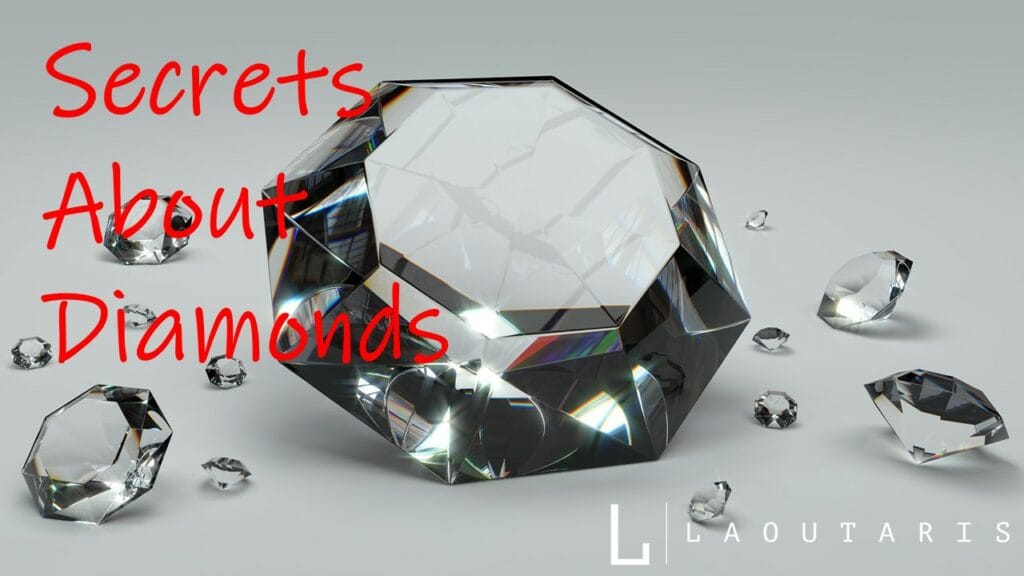
Thanks for sharing. I read many of your blog posts, cool, your blog is very good.
Thanks for sharing. I read many of your blog posts, cool, your blog is very good.